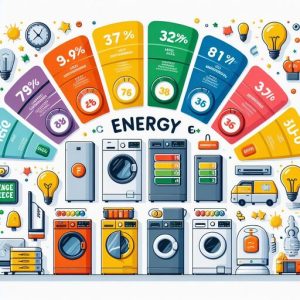In the modern household, energy consumption is a significant concern, both for environmental reasons and for managing utility costs. Among the various appliances found in homes, dishwashers are often scrutinized for their energy usage. However, a thorough examination reveals that energy consumption varies significantly across different household appliances. In this comprehensive analysis, we delve into the data to compare the energy consumption of various home appliances relative to the dishwasher.

Understanding Energy Consumption
Before delving into specific appliance comparisons, it’s essential to understand how energy consumption is measured and categorized. The energy usage of appliances is typically expressed in kilowatt-hours (kWh) – a unit that quantifies the amount of energy consumed over time. Energy labels, such as the Energy Star rating in the United States and the EU Energy Label in Europe, provide consumers with valuable information about an appliance’s energy efficiency.
Dishwashers: Myth vs. Reality
There’s a common misconception that dishwashers consume excessive amounts of energy. However, modern dishwashers have evolved significantly in terms of energy efficiency. According to data from the U.S. Department of Energy, Energy Star-certified dishwashers use approximately 12% less energy than standard models, making them an eco-friendly and cost-effective choice.
Moreover, advancements in dishwasher technology, such as sensor-driven cycles and energy-saving modes, further contribute to reducing energy consumption. When used efficiently – with full loads, proper loading techniques, and selecting appropriate wash cycles – dishwashers can be one of the most energy-efficient ways to clean dishes.
Comparative Analysis
To provide a comprehensive comparison, let’s examine the energy consumption of several common household appliances relative to dishwashers:
Refrigerators
Refrigerators are essential appliances in any home, running 24/7 to keep food fresh. According to the U.S. Department of Energy, the average refrigerator consumes around 400-600 kWh of electricity per year. However, energy-efficient models with features like improved insulation and variable-speed compressors can significantly reduce energy usage.
Washing Machines
Washing machines are another energy-intensive appliance, particularly during the heating and spinning cycles. Front-loading washing machines tend to be more energy-efficient than top-loading models, with an average energy consumption of 120-150 kWh per year. Energy-saving features such as cold water settings and high-efficiency motors further enhance their efficiency.
Clothes Dryers
Clothes dryers are notorious for their high energy consumption, especially electric models. On average, a clothes dryer consumes approximately 300-500 kWh of electricity per year. However, opting for a gas-powered dryer can significantly reduce energy usage, as gas is often more cost-effective and environmentally friendly than electricity.
Ovens and Stoves
Ovens and stoves vary widely in energy consumption depending on usage patterns and cooking methods. Conventional electric ovens typically consume around 200-400 kWh per year, while gas ovens are generally more energy-efficient. Using smaller appliances like toaster ovens or induction cooktops can further reduce energy consumption for cooking tasks.
Conclusion
In conclusion, while dishwashers have often been scrutinized for their energy consumption, a comparative analysis reveals that they are not the most energy-intensive home appliances. When used efficiently and with energy-saving features, dishwashers can be a sustainable and economical choice for cleaning dishes.
Other household appliances such as refrigerators, washing machines, clothes dryers, and ovens also contribute to overall energy consumption in the home. However, advancements in technology and the availability of energy-efficient models have enabled consumers to minimize their environmental impact while reducing utility costs.
Ultimately, the key to optimizing energy efficiency in the home lies in selecting Energy Star-certified appliances, adopting energy-saving practices, and being mindful of usage patterns. By making informed decisions and embracing energy-efficient technologies, consumers can contribute to a greener and more sustainable future while enjoying the comforts of modern living.
